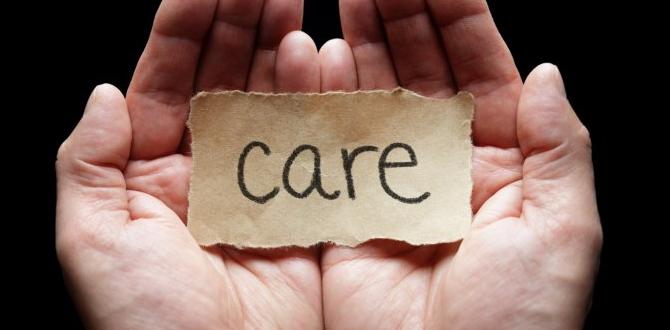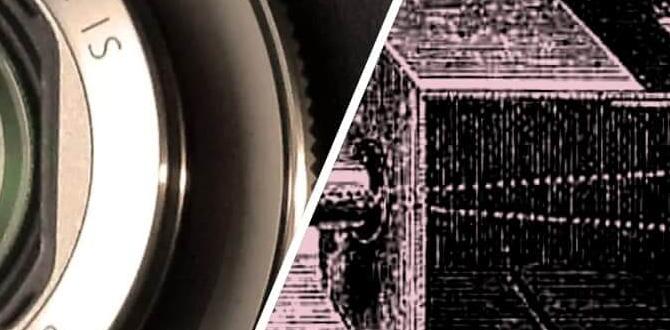Wiping correctly after urinating is key for hygiene and preventing infections. Always wipe from front to back to avoid spreading bacteria. Use soft, absorbent toilet paper and pat gently to dry the area. Washing with water can also help. Remember, good hygiene keeps you healthy and comfortable!
Let’s face it: nobody really *talks* about the right way to wipe after using the restroom. But it’s super important! Doing it wrong can lead to discomfort and even infections. It might seem basic, but a lot of us could use a little refresher. No worries, though! I’m here to walk you through the best methods, step by simple step. Soon, you’ll be a pro at staying clean and comfortable. Ready to get started?
Why Proper Wiping Matters
You might wonder, “Is there *really* a wrong way to wipe?” Absolutely! Here’s why getting it right is more important than you think:
- Preventing Infections: The main goal is to avoid spreading bacteria. Wiping the wrong way can move germs from your rear to your front, causing infections.
- Maintaining Hygiene: Proper wiping keeps you feeling fresh and clean throughout the day.
- Avoiding Irritation: Being too rough or using the wrong materials can irritate sensitive skin.
- Overall Comfort: Let’s be honest; nobody wants to feel uncomfortable or unclean after using the restroom.
The Essential Supplies You’ll Need
Before we dive into the steps, make sure you have these basic supplies:
- Toilet Paper: Choose a soft, absorbent brand.
- Optional:
- Wet Wipes: Unscented, flushable wipes can provide extra cleaning.
- Bidet or Washlet: These devices use water to cleanse, reducing the need for toilet paper.
Step-by-Step Guide to Wiping After Urinating
Okay, let’s get to the nitty-gritty. Follow these steps for the best hygiene:
Step 1: Prepare Your Toilet Paper
Tear off a few sheets of toilet paper. The amount depends on your preference, but start with a generous wad. Fold it into a neat square for better control and absorption.
Step 2: Position Yourself Correctly
Slightly lean forward to allow better access. This helps you reach all the necessary areas effectively.
Step 3: The Golden Rule: Wipe Front to Back
This is the most important step! Always wipe from front to back. This prevents bacteria from the anal area from reaching the urethra, which can cause urinary tract infections (UTIs). For women, this is especially crucial due to the shorter distance between the urethra and anus, according to the National Institute of Diabetes and Digestive and Kidney Diseases NIDDK.
Step 4: Pat, Don’t Rub
Instead of rubbing, gently pat the area to dry it. Rubbing can cause irritation, especially if the skin is sensitive. Patting is gentler and more effective at removing moisture.
Step 5: Check for Cleanliness
Fold the toilet paper to reveal a clean surface and pat again. Repeat until the paper comes away clean. This ensures you’ve removed all residue.
Step 6: Dispose of the Toilet Paper Properly
Flush the used toilet paper down the toilet. If you’re using wet wipes, check the packaging to ensure they are flushable. If not, dispose of them in a waste bin to avoid plumbing issues.
Step 7: Wash Your Hands
This is non-negotiable! Wash your hands thoroughly with soap and water for at least 20 seconds. This removes any lingering bacteria and keeps you healthy.
Advanced Techniques for Extra Cleanliness
Want to take your hygiene to the next level? Here are a few extra tips:
Using Wet Wipes
After wiping with toilet paper, use a flushable wet wipe for an extra clean feel. Be sure to choose wipes that are unscented and alcohol-free to avoid irritation. Remember, only flush wipes labeled as “flushable” to prevent plumbing problems. According to a report by Ryerson University, many wipes marketed as flushable do not break down properly and can cause sewer clogs Ryerson University.
The Bidet or Washlet Option
A bidet or washlet uses a stream of water to clean you after using the restroom. It’s a popular option in many countries and is gaining traction in the US. Here’s how to use one:
- Position Yourself: Sit comfortably on the toilet.
- Activate the Bidet: Use the controls to start the water stream. Adjust the pressure and temperature to your liking.
- Cleanse Thoroughly: Allow the water to cleanse the area for about 20-30 seconds.
- Dry Off: Use the bidet’s drying function (if available) or pat dry with a few squares of toilet paper.
- Wash Your Hands: Always wash your hands after using the restroom, even with a bidet.
The Shower Option
Some people prefer to quickly rinse with water in the shower after using the restroom. If you opt for this, ensure the water temperature is comfortable and gently cleanse the area. Pat dry with a clean towel.
Common Mistakes to Avoid
Steer clear of these common pitfalls to ensure proper hygiene:
- Wiping Back to Front: This is the biggest mistake! Always wipe front to back to avoid spreading bacteria.
- Using Scented Products: Scented toilet paper or wipes can irritate sensitive skin. Stick to unscented options.
- Being Too Rough: Rubbing aggressively can cause chafing and irritation. Be gentle.
- Not Washing Hands: Skipping handwashing is a major hygiene no-no. Always wash your hands thoroughly after using the restroom.
- Flushing Non-Flushable Wipes: Only flush wipes that are specifically labeled as flushable. Others can clog your plumbing.
Tips for Sensitive Skin
If you have sensitive skin, these tips can help prevent irritation:
- Choose Soft Toilet Paper: Opt for brands that are specifically designed for sensitive skin. Look for terms like “gentle” or “hypoallergenic.”
- Use Unscented Products: Avoid toilet paper, wipes, or soaps with added fragrances, as these can cause irritation.
- Pat Dry Gently: Avoid rubbing, which can aggravate sensitive skin. Pat the area dry with a soft cloth or toilet paper.
- Consider a Bidet: A bidet can be a great option for sensitive skin, as it uses water to cleanse the area, reducing the need for toilet paper.
- Apply a Barrier Cream: If you experience frequent irritation, consider applying a thin layer of a barrier cream, such as zinc oxide, to protect the skin.
Dealing with Specific Situations
Life happens, and sometimes you need to adjust your routine. Here’s how to handle a few specific situations:
On Your Period
During menstruation, hygiene is even more critical. Change your sanitary products regularly and use unscented wipes to stay fresh. Washing with water more frequently can also help.
Traveling
When traveling, carry your own supply of toilet paper and hand sanitizer. Public restrooms may not always be well-stocked or clean. Wet wipes can also be a lifesaver for maintaining hygiene on the go.
After Giving Birth
Postpartum hygiene is essential for healing and preventing infection. Use a peri bottle (a squirt bottle) filled with warm water to gently cleanse the area after using the restroom. Pat dry with a soft towel or gauze. Your doctor may also recommend a sitz bath to soothe the area.
The Environmental Impact
It’s worth considering the environmental impact of your choices. Here are a few ways to be more eco-friendly:
- Use Less Toilet Paper: Only take what you need.
- Choose Recycled Toilet Paper: Look for toilet paper made from recycled materials.
- Consider a Bidet: Bidets reduce the need for toilet paper, saving trees and water.
- Dispose of Wipes Properly: Never flush non-flushable wipes.
Troubleshooting Common Issues
Sometimes, despite your best efforts, you might encounter issues. Here’s how to troubleshoot:
| Issue | Possible Cause | Solution |
|---|---|---|
| Irritation | Rough wiping, scented products, allergies | Switch to soft, unscented products; pat gently; consider a barrier cream. |
| UTI | Wiping back to front, not washing hands | Always wipe front to back; wash hands thoroughly; see a doctor for treatment. |
| Hemorrhoids | Straining, constipation, pregnancy | Avoid straining; eat a high-fiber diet; use a hemorrhoid cream; consult a doctor. |
| Plumbing clogs | Flushing non-flushable wipes, excessive toilet paper | Only flush toilet paper; dispose of wipes in a trash bin; use less toilet paper. |
Expert Opinions and Recommendations
Here’s what the experts say about proper wiping techniques:
- Doctors: Emphasize the importance of wiping front to back to prevent UTIs, especially in women. They also recommend using soft, unscented products to avoid irritation.
- Plumbers: Urge people to avoid flushing non-flushable wipes, as they can cause serious plumbing problems. They also advise against using excessive amounts of toilet paper.
- Dermatologists: Recommend gentle cleansing and patting dry to avoid irritating sensitive skin. They also suggest considering a bidet as a gentler alternative to toilet paper.
Hygiene Habits Around the World
Different cultures have different hygiene practices. In many parts of the world, bidets or water are commonly used for cleansing after using the restroom. In some cultures, toilet paper is not used at all. Understanding these differences can broaden your perspective and help you appreciate the various ways people maintain hygiene.
FAQ: Your Wiping Questions Answered
Here are some frequently asked questions about proper wiping techniques:
Q1: Is it really that important to wipe front to back?
A: Yes! Wiping front to back is crucial, especially for women, to prevent bacteria from the anus from entering the urethra and causing UTIs.
Q2: Can I use baby wipes instead of toilet paper?
A: While baby wipes can be used, they are not flushable and should be disposed of in a trash bin to avoid plumbing problems. Look for wipes specifically labeled as “flushable.”
Q3: How often should I shower?
A: Most experts recommend showering daily to maintain good hygiene. However, you can adjust the frequency based on your activity level and skin type.
Q4: What’s the best way to clean up after diarrhea?
A: Gently cleanse the area with soft toilet paper or wet wipes. You may also want to rinse with water in the shower or use a bidet. Be sure to pat dry gently to avoid irritation.
Q5: Is it okay to use scented toilet paper?
A: Scented toilet paper can irritate sensitive skin, so it’s best to stick to unscented options.
Q6: How can I tell if I have a UTI?
A: Symptoms of a UTI include a burning sensation when urinating, frequent urination, and cloudy or strong-smelling urine. See a doctor if you suspect you have a UTI.
Q7: Are bidets hygienic?
A: Yes, bidets are very hygienic! They use water to cleanse the area, reducing the need for toilet paper and providing a more thorough cleaning.
Conclusion
So, there you have it! Mastering the art of wiping after urinating is all about technique, awareness, and a little bit of care. By following these simple steps and avoiding common mistakes, you can ensure optimal hygiene and comfort. Remember to wipe front to back, pat gently, and always wash your hands. Whether you stick with toilet paper, try wet wipes, or invest in a bidet, the key is to find a routine that works for you and keeps you feeling fresh and clean. Now go forth and wipe with confidence!






